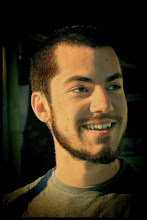Fairbanks airport and surrounding city from the air.
Our journey started off in the center of the state, in the city of Fairbanks. We flew up there on the 29th
of May, having a couple days of prep and groundwork to do before we headed out
into the middle of nowhere. The crew included five members from the Manomet Center for Conservation Sciences, a non-profit organization that I have worked
for doing songbird banding for many years, and also happens to be the
place/experience that got me interested in birds initially. The five Manomet
people were me, Brad Winn, Alan Kneidel, Laura Koloski, and Mark LaFaver. Unfortunately I never got a group photo of everyone at any point throughout the trip!
The rest of the crew was made up of
employees of the US Fish & Wildlife Service, with Scott Freeman being the
crew leader, and Elin Pierce and Alfredo Soto rounding out our eight-person
crew. The whole project is a joint effort between Manomet and the USF&WS,
with funding provided by grants from both sides. The project is part of a larger network of research sites, the Arctic Demographic Shorebird Network.
On June 1 five of the crewmembers
headed north in trucks, driving all day from Fairbanks to a remote airstrip at
Galbraith Lake, north along the Dalton Highway, and just south of the Brooks
Range. The following day they started flying into camp, leaving in bush planes
from Galbraith and flying over the mountains to the coastal plain, where they
landed on a frozen lake, as we all would, where they begun to set up camp.
The three remaining people, one of
which was me, stayed one more night in Fairbanks, and then flew from Fairbanks
to the Canning directly, with a stop at Kavik Airstrip, another tiny airstrip
in the middle of nowhere, this one on the north side of the Brooks Range.
Boreal Chickadee nesting right outside our hotel in Fairbanks



No comments:
Post a Comment